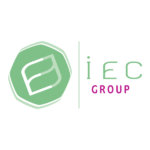Multimodal Hydration by IEC
14 December 2021
Test your moisturizing products with multiple devices, in multiethnic panel under various climatic conditions
The skin, the largest organ of the human body, can exchange with its environment while protecting itself from external aggressions.
On the surface of the skin, the hydrolipidic film contributes to maintaining a protective barrier, in particular its level of hydration by regulating water exchanges and maintaining a supple, soft, and comfortable skin.
To keep the skin hydrated and prevent skin ageing by maintaining a certain elasticity and a radiant complexion, it is not only essential to drink but also to moisturize the skin with cosmetic products whose effectiveness has been proven by clinical tests during a controlled Kinetics and/or in use tests.
To address the issue of hydration, IEC suggests various subjective tests (scoring, self-assessment) associated with instrumental measurements. These measurements of the skin’s hydration state can be carried out directly by quantifying electrical or electromagnetic properties of the skin or indirectly by assessing skin surface, texture and entropy.
Corneometer™ CM 825 [Courage + Khazaka]
This “classic” equipment measures the electrical capacity (a.u.) and is commonly used to obtain basic information on the hydration of the superficial layers of the skin (stratum corneum) of different parts of the body (face, lips, forearms, legs, etc.), during in use tests or controlled Kinetics over 8, 10 or 24 hours.
A model of the hydration of the different areas of the face can be obtained by carrying out 30 measurements on each hemi-face (i.e. 60 measurements in total) allowing a establish cartography [Mapping by Newtone Technologie] and thus to visualize the most hydrated areas over time.
Moisture Map® MM100 [Courage + Khazaka]
It measures the penetration of the electromagnetic field and complement to the classic hydration measurement mentioned above, which allows a mapping of surface hydration. The images and measurements of the micro-depression network (RMD) also give perspectives in the evaluation of skin texture (roughness, etc.).
VisioScan® VC 20 plus [Courage + Khazaka]
Several parameters relating to skin hydration can be assessed with this device:
- Skin surface parameters such as smoothness, roughness, desquamation.
- Texture parameters such as entropy, homogeneity
- Anisotropy index which decreases for a more hydrated skin.
C-Cube® [Pixience]
The C-Cube is based on an Ultra-HD camera, LED lighting and a colorimetric, geometric and 3D calibration that provides information on the degree of hydration of the micro-relief (roughness/Smoothness; symmetry/sharpness). It is also possible to obtain other data such as the isotropy and dryness of the micro-relief or even the quantity of scales.
Skin Cam®- [Newtone Technologies]
This compact and nomad device, which can be used both in the laboratory and by the subjects at home, provides among other data on the texture and roughness of the micro-relief through a 3D analysis.
Squames Analysis Station [Monaderm]
The purpose of the Quanti-Squames® software is to analyze and quantify the amount of scaling (occupied surface area and the scaling index) on the surface of skin collected using D-Squames™.
Silicone Skin Replicae Analysis Station [Monaderm] or Fringes Projection [EOTECH]
Using Quantilines®[Monaderm] and AEVA [EOTECH] softwares, an indirect analysis of the micro-relief is carried out on cheek silicone replicae, which gives the roughness and smoothness parameters of the skin.
ColorFace® [Newtone Technologies]
Based on multimodal acquisitions of the full face, the Colorface can be used for texture (contrast, entropy) and roughness analysis under cross polarization modality.
IEC offers protocols combining in Use Tests with various techniques mentioned above under standard environmental conditions, but also under specific climates in multiethnic panels due to the geographical distribution of its testing centers [Europe, Asia, Africa], : continental with harsh winters [Sofia, Bulgaria], equatorial with heat and humidity [Singapore], Mediterranean with dry summers and winters with drying sea winds [Cape Town, South-Africa], and also in France, Japan, China and Korea for a global appraisal of moisturizing performances for cosmetic products.
CONTACT
IEC Group
Jean-Robert Campos
Scientific Director








 Follow us on Linkedin!
Follow us on Linkedin!
You must be logged in to post a comment.